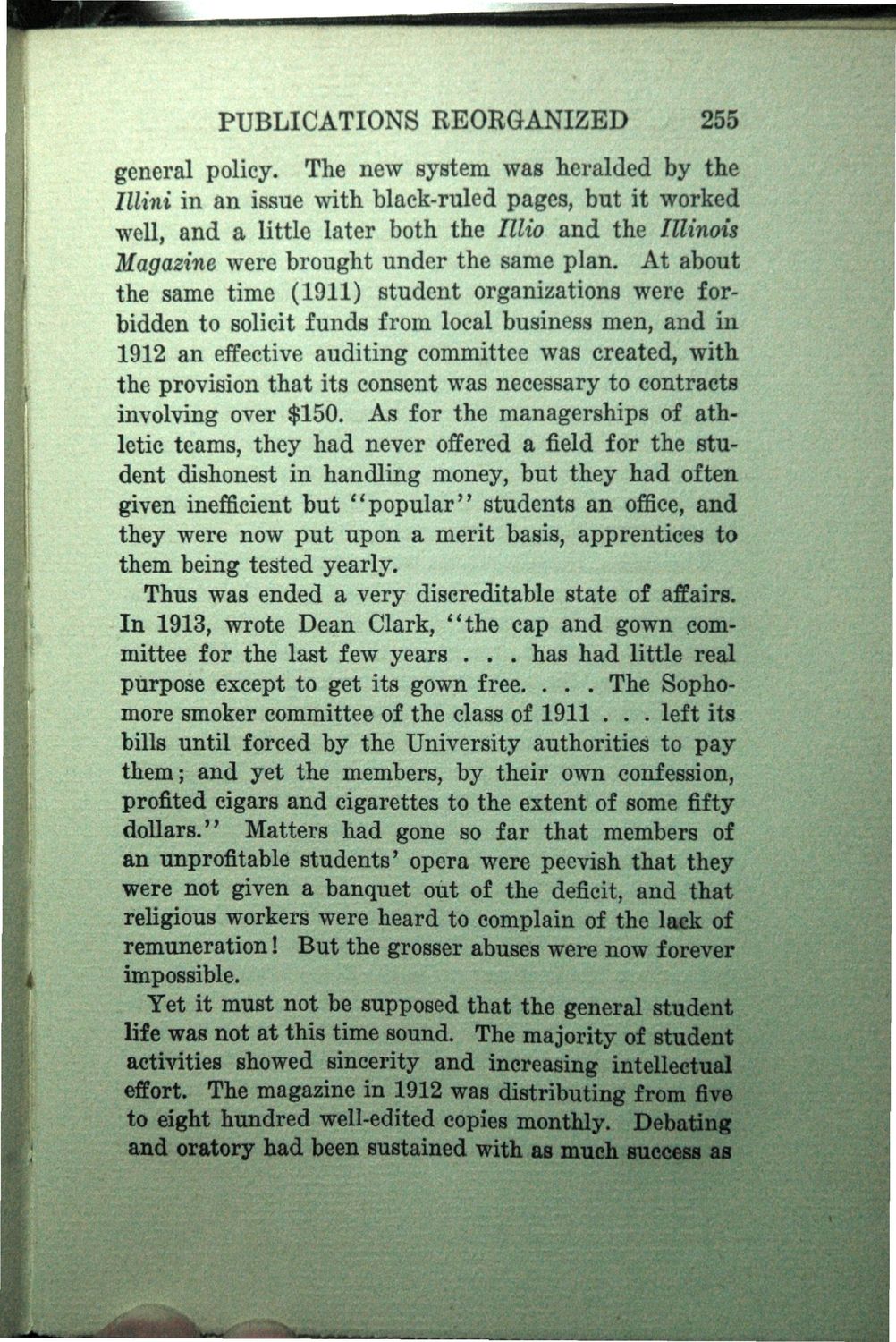| |
| |
Caption: Book - History of the University (Nevins)
This is a reduced-resolution page image for fast online browsing.

EXTRACTED TEXT FROM PAGE:
PUBLICATIONS REORGANIZED 255 general policy. The new system was heralded by the Illini in an issue with black-ruled pages, but it worked well, and a little later both the ffiio and the IUinois Magazine were brought under the same plan. At about the same time (1911) student organizations were forbidden to solicit funds from local business men, and in 1912 an effective auditing committee was created, with the provision that its consent was necessary to contracts involving over $150. As for the managerships of athletic teams, they had never offered a field for the student dishonest in handling money, but they had often given inefficient but "popular" students an office, and they were now put upon a merit basis, apprentices to them being tested yearly. Thus was ended a very discreditable state of affairs. In 1913, wrote Dean Clark, "the cap and gown committee for the last few years . . . has had little real purpose except to get its gown free. . . . The Sophomore smoker committee of the class of 1911 . . . left its bills until forced by the University authorities to pay them; and yet the members, by their own confession, profited cigars and cigarettes to the extent of some fifty dollars." Matters had gone so far that members of an unprofitable students' opera were peevish that they were not given a banquet out of the deficit, and that religious workers were heard to complain of the lack of remuneration! But the grosser abuses were now forever impossible. Yet it must not be supposed that the general student life was not at this time sound. The majority of student activities showed sincerity and increasing intellectual effort. The magazine in 1912 was distributing from five to eight hundred well-edited copies monthly ^Debating and oratory had been sustained with as much success as
| |